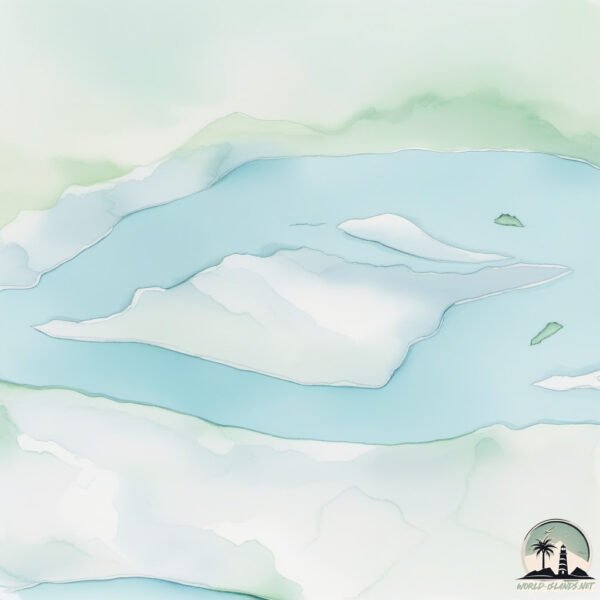Welcome to Aulitivik Island , a Polar island in the Davis Strait, part of the majestic Arctic Ocean. This guide offers a comprehensive overview of what makes Aulitivik Island unique – from its geography and climate to its population, infrastructure, and beyond. Dive into the details:
Geography and size of Aulitivik Island
Size: 211.6 km²Coastline: 118.3 kmOcean: Arctic OceanSea: Davis StraitContinent: North America
Aulitivik Island is a Large Island spanning 212 km² with a coastline of 118 km.
Archipel: Canadian Arctic Archipelago – A vast and remote region in northern Canada, consisting of a series of large and small islands known for their extreme Arctic environment and unique wildlife.
Tectonic Plate: North America – Covers North America and parts of the Atlantic and Arctic Oceans, characterized by diverse geological features and varying levels of seismic activity.
The geographic heart of the island is pinpointed at these coordinates:
Climate and weather of Aulitivik Island
Climate Zone: PolarClimate Details: TundraTemperature: Cold
Climate Characteristics: The tundra climate features long, extremely cold winters and short, cool summers. Vegetation is limited to mosses, lichens, and small shrubs due to the low temperatures and short growing seasons. Biodiversity is low, but some specialized species thrive.
Topography and nature of Aulitivik Island
Timezone: UTC-05:00Timezone places: America/New_YorkMax. Elevation: 753 m Mean Elevation: 328 mVegetation: Snow and Ice CoveredTree Coverage: 40%
The mean elevation is 328 m. The highest elevation on the island reaches approximately 753 meters above sea level. The island is characterized by Mountains: High, steeply elevated landforms. Characterized by both a high maximum elevation (over 500 meters) and a high mean elevation, creating rugged, mountainous terrains on islands.
Dominating Vegetation: Snow and Ice Covered
Vegetation: 4 vegetation zones – Diverse Island
Infrastructure and Travelling to Aulitivik Island
Does the island have a public airport? no .
Does the island have a major port? no .
The mean population of Aulitivik Island is 0 per km². Aulitivik Island is Uninhabited. The island belongs to Canada .
The name of the island resonates across different cultures and languages. Here is how it is known around the world: Arabic: بافين; German: Baffininsel; Spanish: Isla de Baffin; French: Île de Baffin; Portuguese: Ilha de Baffin; Russian: Баффинова Земля; Chinese: 巴芬島
Continuing your journey, Aulitiving Island is the next notable island, situated merely km away.
Clyde River, Nunavut
Clyde River is an Inuit hamlet located on the shore of Baffin Island's Patricia Bay, off Kangiqtugaapik, an arm of Davis Strait in the ...
Clyde River, Nunavut
Clyde River is an Inuit hamlet located on the shore of Baffin Island's ...
Clyde River is an Inuit hamlet located on the shore of Baffin Island's Patricia Bay, off Kangiqtugaapik, an arm of Davis Strait in the ...
Rick Price (Signy). Kayaking with Bowhead whales off Baffin Island, Canadian Arctic..
I was the cameraman filming for a Discovery Channel documentary about ...
I was the cameraman filming for a Discovery Channel documentary about the endangered Bowhead whales in the Canadian ...
Message for Clyde River - Students on Ice Arctic Expedition 2009
The Students on Ice Arctic Expedition 2009 sends a message to the ...
The Students on Ice Arctic Expedition 2009 sends a message to the community of Clyde River, Nunavut after attempting to reach ...
Canada is classified as Developed region: G7: Group of Seven – Major advanced economies, including Canada, France, Germany, Italy, Japan, the United Kingdom, and the United States. The level of income is High income: OECD.
News – Latest Updates and Headlines from Aulitivik Island
Stay informed with the most recent news and important headlines from Aulitivik Island. Here’s a roundup of the latest developments.
Loading...
Please note: The data used here has been primarily extracted from satellite readings. Deviations from exact values may occur, particularly regarding the height of elevations and population density. Land area and coastline measurements refer to average values at mean high tide.

